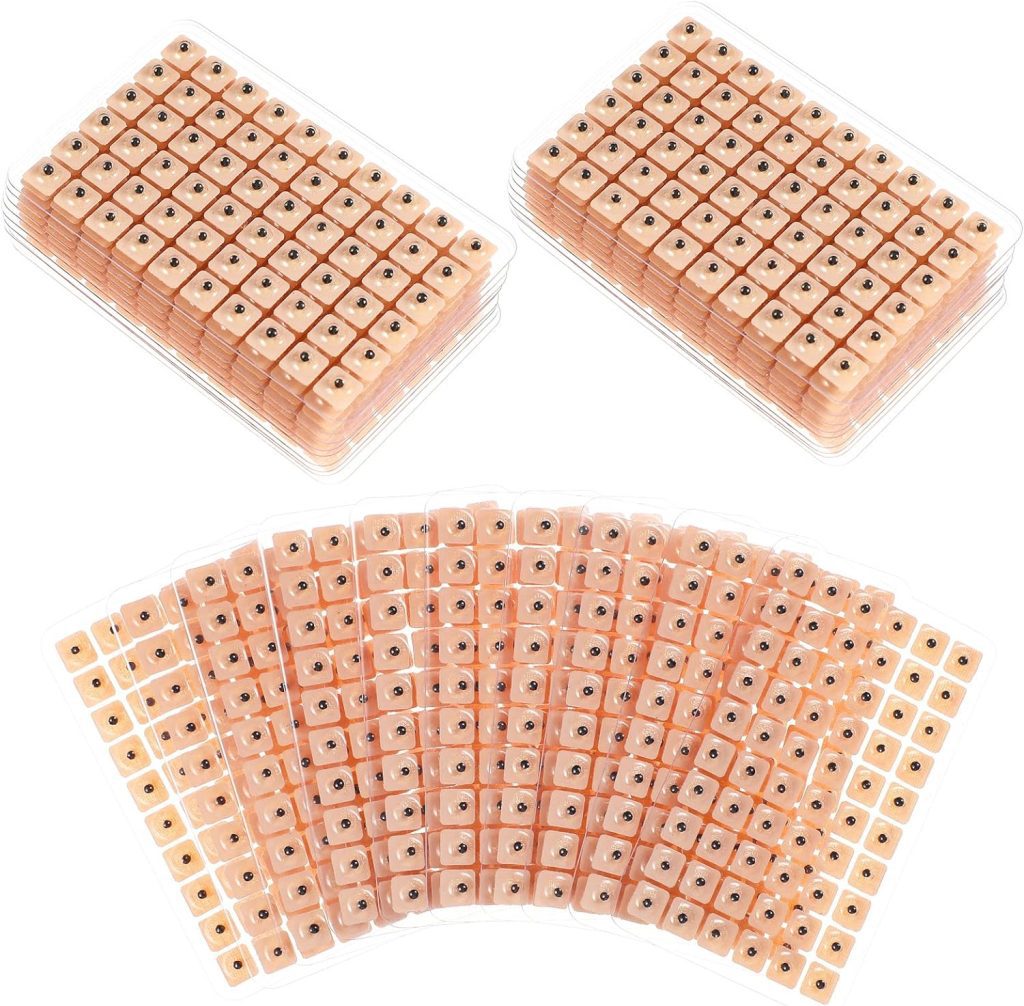Affiliate Disclosure: This post may contain affiliate links. This means we may earn a commission if you make a purchase through these links. This is at no extra cost to you. We only recommend products and services we truly believe in. Your support helps us keep the site running! Thank you.
Can using ear seeds for hypermobility work? The answer is possibly. Research is very sparse into the use of ear seeds to treat medical conditions. But what there is evidence of is the positive impact acupuncture can have on chronic pain conditions, such as hypermobility.
If you’re in the UK, you’re likely to have heard of the Dragon Den’s ear seed scandal. In January, Giselle Boxer won support from all the dragons for her ear seed business. In the episode, she claimed that ear seeds (along with diet, acupuncture, Chinese herbs) helped her to recover from ME.
Hundreds of complaints were made about the episode and the claims that ear seeds helped her recovery. Medical experts and ME sufferers voiced concerns that there’s no scientific evidence to back up the claims made in the show.
Concerns were also raised that the show was trying to cash in on disabled people after Boxer revealed the ear seeds cost £3.00 to produce but sell for £30.00.
As a result, the episode was pulled from online streaming services. It has since been edited and is available to watch again.
With all this going on, the first thing I thought was ‘what are ear seeds?’ Then, after discovering what they are, I was intrigued to find out whether ear seeds for hypermobility is a possible treatment solution.
Read on, to find out what I found.
Understanding ear seeds
Despite having never heard of ear seeds until seeing them on Dragon’s Den, they’ve actually been around for decades. Dr. Paul Nogier launched them in 1957. However, they use Chinese acupuncture practices that date back more than 3000 years.
Ear seeds are tiny devices that sit on the outer part of the ears. They provide a type of auriculotherapy and stimulate acupressure points.

Do ear seeds work?
Whether ear seeds work or not is a controversial question.
The BBC’s edited version of Giselle Boxer’s episode of Dragon’s Den says “Acu seeds (ear seeds) are not intended as a cure for any medical condition and advice should always be sought from a qualified healthcare provider about any health concerns.”
What science does tell us is that acupuncture for chronic pain conditions produces mainly positive long-term results. However, it’s important to note that this study does not look into the effect of ear acupuncture on chronic pain.
There are a few small-scale studies into ear seeds which have some promising results.
The first is a 2015 meta-analysis which found that auricular acupuncture can help treat insomnia. While these findings are good, the study was criticized for various things, including quality, sample size, and potential publication bias.
Another 2015 study reported that ear seeds made from the plant vaccaria can make it easier for people to manage pain. Again, this study has criticisms in the fact that a small sample size was used.

Happy 24k Gold Acupressure Ear Seeds by Vie Healing. Click here to check price & buy.
Can ear seeds be used for hypermobility?
Yes, it’s possible to use ear seeds for hypermobility. But, it’s important to note that there’s no scientific research into the effects of ear seeds on hypermobility. Similarly, there’s no scientific studies into acupuncture and hypermobility either.
Paula Bruno, Ph.D., L.Ac. is a licensed acupuncturist and herbalist in Texas and reports that she often sees success when treating patients with Ehlers-Danlos syndrome with ear seeds. She says that patients with MCAS do well with ear seeds too.
Hypermobility and MCAS go hand in hand. MCAS (Mast Cell Activation Syndrome) occurs when repeated episodes of allergy-like symptoms present.
You can read Dr. Bruno’s full article here.
What symptoms of hypermobility can ear seeds help with?
According to Health.com, ear seeds can help with pain management, controlling weight, insomnia, and anxiety. All of these health complaints are connected to hypermobility.
For example, our weak connective tissue, puts our bodies under more stress which results in pain. When you’re in pain because of hypermobility, weight gain is inevitable.
And, being anxious about your hypermobile body, your long-term health, and the hustle and bustle of general life is a given too.
As mentioned above, chronic pain is the main symptom of hypermobility that ear seeds are most likely to help with.
If you have chronic low back pain due to hypermobility, you may particularly benefit. A 2013 study found that patients who had auricular point acupressure (APA) had:
- 70% reduction in worst pain intensity
- 75% reduction in overall pain intensity
- 42% improvement in disability
What are the side effects of ear seeds for hypermobility?
The main side effect of ear seeds, particularly in hypermobile folk, is skin irritability and fragility. Hypermobile skin is naturally more fragile and prone to injury than typical skin. As such, there’s a possibility that skin damage will occur when using ear seeds.
You’re also meant to push down on ear seeds when you feel pain to stimulate acupressure points. With hypermobile skin, it’s possible that this could cause bruising or bleeding.
A final note on ear seeds
Following the Dragon’s Den episode and all the issues raised, the British Acupuncture Council put out a statement regarding the use of ear seeds for ME/CFS. You can read it in full here.

